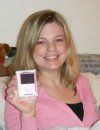|
ESL Forum:
Techniques and methods
in Language Teaching
Games, activities
and teaching ideas
Grammar and
Linguistics
Teaching material
Concerning
worksheets
Concerning
powerpoints
Concerning online
exercises
Make suggestions,
report errors
Ask for help
Message board
|
ESL forum >
Ask for help > Simple Present or Plural Verbs?
Simple Present or Plural Verbs?
|

Homeless Turtle

|
Simple Present or Plural Verbs?
|
|
Hello everyone!
I have an upcoming lesson on Simple Present Tense. But I have a couple of questions:
Question 1- Is there a difference between Simple Present and Plural Verbs?
The example given in our text book is:
I love baseball.
My brother loves baseball too.
Question 2- Can anyone think of any good activities to help my students learn this grammar point? I have to keep it really, really, simple (no seriously, REALLY simple!)
Thank you for your help! |
12 Nov 2010
|
|
|
|

douglas

|
|
Loves is not a plural verb-- the "s" simply indicates the third person singular.
My easy rule: "He, she, it; the "S" comes with" |
12 Nov 2010
|
|
|

Zora

|
|
Douglas is correct. The "s" doesn�t indicate a plural verb... And his rule is one that I often use. And if that doesn�t seem to work - tell them that "s" is for singular! (he, she, it... one person or thing.)
|
12 Nov 2010
|
|
|

debk2000

|
|
Not sure if this is what you �re looking for, but you can easily use daily routines to practice simple present like:
I eat breakfast at 7:00. etc. -going through one �s daily routine
And later add:
He goes to work. etc. - to practice the third person using daily routines.
There �s a lot of good resources on ESL printables for daily routines! :)
|
12 Nov 2010
|
|
|

class centre

|
Look, what I say to my sts about this rule: if the subject has S, the verb does not have it and if the subject does not have S ( I mean nouns not pronouns) the verb does have it. We speak very simply about it : S is only one and can �t stand in both places at a time. They get it very easy. Try...
Good luck!
|
12 Nov 2010
|
|
|

Homeless Turtle

|
|
Thank you everyone for your help. I appreciate you taking the time to clarify this.  |
14 Nov 2010
|
|
|